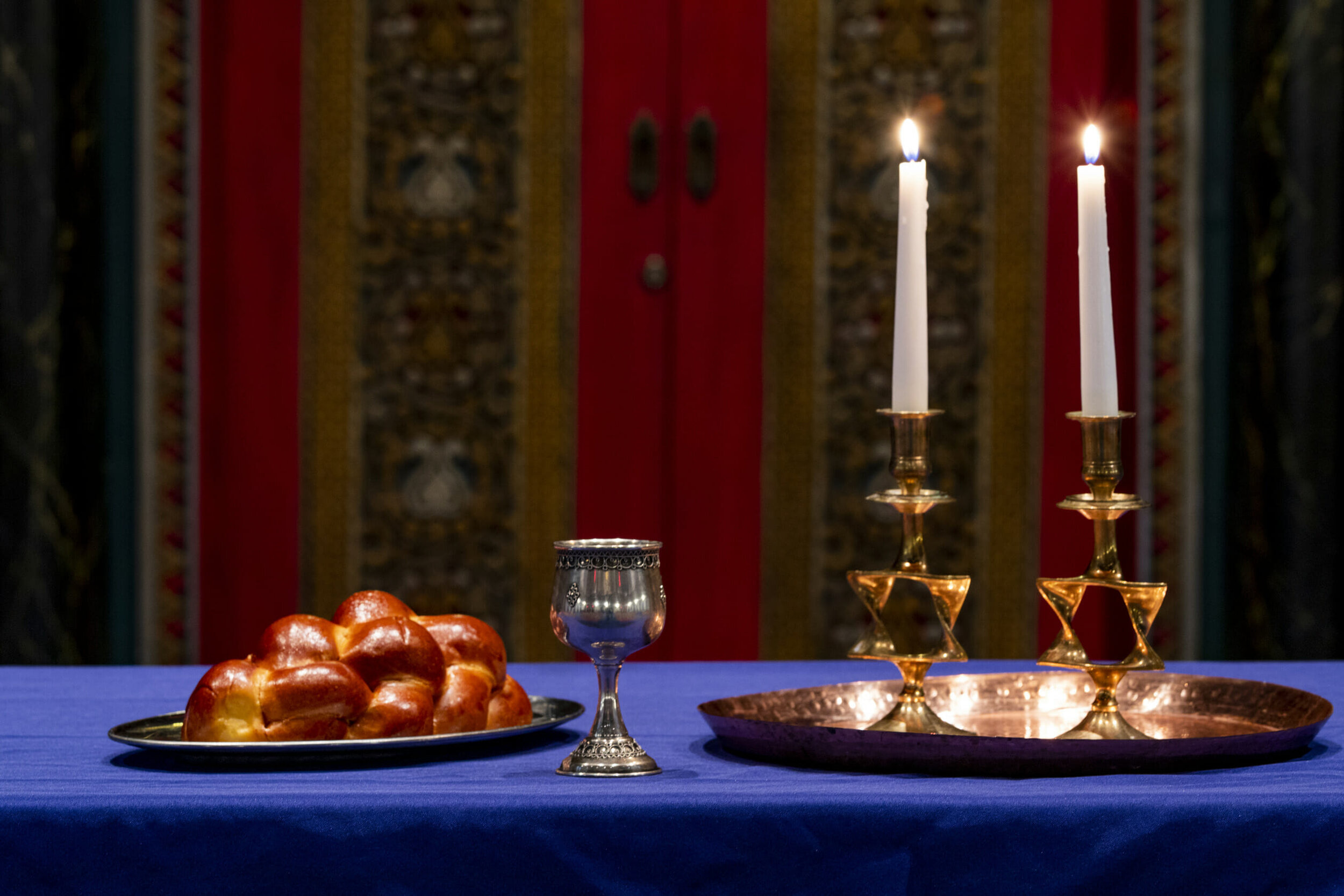About Saturday Morning Services
The heart and the highlight
Traditionally, the Shabbat morning service, held on Saturday mornings, is the heart and highlight of the spiritual week. It is called Shacharit (dawn service) and in Orthodox and Conservative synagogues, is followed immediately by an additional service called Musaf.
Shacharit follows the order of the weekday morning prayers, with special additions and omissions for Shabbat. It includes service for the Reading of the Torah, from the same weekly portion read by Jewish communities around the world. At Temple Sinai, our minhag (custom) is to pray the service for the first hour, and then move to Torah Study for the following 90 minutes. When there is a festival, bar or bat mitzvah, or another special occasion, we will have the Torah Reading in the morning service.

As with the Friday Evening Service, many of these prayers were first chanted in synagogues in the Hellenistic Biblical Period, beginning around 330 BCE They were written down in the Mishna (c. 250 CE) and the order was further refined in the period of the Talmud (350-750 CE). Since then, additional prayers and hymns have been incorporated into the service. The Reform liturgy removes or changes those traditional prayers focused on the priesthood, temple sacrifices, messianic hope, or resurrection of the dead at the end of time.
The SHABBAT SHACHARIT services follow the following basic order:
BIRKOT HASHACHAR (Blessing of Dawn) These are blessings that were/are traditionally said in the home upon rising. They include the Nisim b’chol Yom, or a series of short blessings to create mindfulness of each step of getting up in the morning, from opening one’s eyes to stretching, standing up, and washing one’s face.
P’SUKEI D’ZIMRA (Verses of Praise) These ‘warm-up’ prayers are made up of Psalms and other prayers of praise, almost all chanted or sung. This includes Ashrei (Psalm 145:1-21), Nishmat (an ancient prayer of gratitude), and Psalms 92 and 150. We mark the end of these preliminary prayers with the Hatzi Kaddish, the short kaddish, chanted while standing.
THE SHEMA AND HER BLESSINGS
BAR’CHU (call to worship, chanted while standing), This is the formal entering into the sacred space of prayer.
YOTSER OR (thanking God for creating light and day) The mystical hymn, El Adon is often sung as part of this.
AHAVA RABA (thanking God for showing love through giving of Torah)
SHEMA (the central affirmation in a belief in one God)
V’AHAVTA (part of the Shema, the paragraph immediately following in Deuteronomy 6. It reminds us to love God evening and morning, at work and at home, to place these words on our arms and heads (tefillin), and to write these words on our doors (mezuzah)
MI CHAMOCHA (Who is like You?, the opening of the Song of the Sea, the oldest Hebrew poem sung after the Israelites crossed the sea escaping from slavery in Egypt.) This concludes with Tzur Yisrael (Rock of Israel), a prayer that God will rise up and save us.
THE AMIDAH This series of prayers is said standing, first silently and then repeated as a community, if there is a minyan (ten adult Jews) present. This is the central prayer of the entire service. It gives thanks for ancestors, life, holiness, Shabbat, God’s goodness, and peace. It includes some of the “greatest hits” of Jewish song tradition, including L’dor vador, Yism’chu, and Sim Shalom. If there is no Torah reading, the Mi Shebeirach (prayer for healing) is usually said after the Amidah.
TORAH SERVICE If included, this includes taking out of the Torah’s from the Ark, the Torah procession, the Torah and Haftarah (reading from the prophets), the Mi Shebeirach, and the return of the Torahs to the Ark.
ALEINU (It is our duty). The “Adoration” and the first of a series of concluding prayers. This prayer was originally said only by the Cohen Gadol (High Priest) in the Jerusalem Temple but is now said after the Amidah as a concluding moment of adoration. It is traditional to bow low during the line “Va’anachnu korim” (and we bow…).
MOURNERS’ KADDISH. A Kaddish prayer is said in memory of those who have died by people in mourning for a loved one who has died recently or observing a yahrzeit, or yearly anniversary of death.
CLOSING SONG. To end the service with joy and song, these songs usually praise God for the miracle of life and creation or give thanks for Shabbat. Some popular songs include Adon Olam, Yigdal, Oseh Shalom, Ein Keloheinu, or Ein Adir.
KIDDUSH and MOTZI. Thanking God for the wine and bread, as it is a tradition to share food after services.
Here is an article with more information on what to expect coming to a Reform synagogue for Shabbat services.


